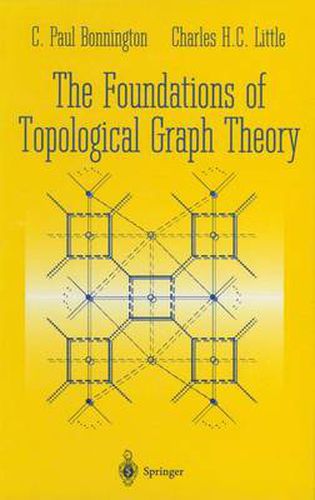Readings Newsletter
Become a Readings Member to make your shopping experience even easier.
Sign in or sign up for free!
You’re not far away from qualifying for FREE standard shipping within Australia
You’ve qualified for FREE standard shipping within Australia
The cart is loading…






This title is printed to order. This book may have been self-published. If so, we cannot guarantee the quality of the content. In the main most books will have gone through the editing process however some may not. We therefore suggest that you be aware of this before ordering this book. If in doubt check either the author or publisher’s details as we are unable to accept any returns unless they are faulty. Please contact us if you have any questions.
This is not a traditional work on topological graph theory. No current graph or voltage graph adorns its pages. Its readers will not compute the genus (orientable or non-orientable) of a single non-planar graph. Their muscles will not flex under the strain of lifting walks from base graphs to derived graphs. What is it, then? It is an attempt to place topological graph theory on a purely combinatorial yet rigorous footing. The vehicle chosen for this purpose is the con cept of a 3-graph, which is a combinatorial generalisation of an imbedding. These properly edge-coloured cubic graphs are used to classify surfaces, to generalise the Jordan curve theorem, and to prove Mac Lane’s characterisation of planar graphs. Thus they playa central role in this book, but it is not being suggested that they are necessarily the most effective tool in areas of topological graph theory not dealt with in this volume. Fruitful though 3-graphs have been for our investigations, other jewels must be examined with a different lens. The sole requirement for understanding the logical development in this book is some elementary knowledge of vector spaces over the field Z2 of residue classes modulo 2. Groups are occasionally mentioned, but no expertise in group theory is required. The treatment will be appreciated best, however, by readers acquainted with topology. A modicum of topology is required in order to comprehend much of the motivation we supply for some of the concepts introduced.
$9.00 standard shipping within Australia
FREE standard shipping within Australia for orders over $100.00
Express & International shipping calculated at checkout
Stock availability can be subject to change without notice. We recommend calling the shop or contacting our online team to check availability of low stock items. Please see our Shopping Online page for more details.
This title is printed to order. This book may have been self-published. If so, we cannot guarantee the quality of the content. In the main most books will have gone through the editing process however some may not. We therefore suggest that you be aware of this before ordering this book. If in doubt check either the author or publisher’s details as we are unable to accept any returns unless they are faulty. Please contact us if you have any questions.
This is not a traditional work on topological graph theory. No current graph or voltage graph adorns its pages. Its readers will not compute the genus (orientable or non-orientable) of a single non-planar graph. Their muscles will not flex under the strain of lifting walks from base graphs to derived graphs. What is it, then? It is an attempt to place topological graph theory on a purely combinatorial yet rigorous footing. The vehicle chosen for this purpose is the con cept of a 3-graph, which is a combinatorial generalisation of an imbedding. These properly edge-coloured cubic graphs are used to classify surfaces, to generalise the Jordan curve theorem, and to prove Mac Lane’s characterisation of planar graphs. Thus they playa central role in this book, but it is not being suggested that they are necessarily the most effective tool in areas of topological graph theory not dealt with in this volume. Fruitful though 3-graphs have been for our investigations, other jewels must be examined with a different lens. The sole requirement for understanding the logical development in this book is some elementary knowledge of vector spaces over the field Z2 of residue classes modulo 2. Groups are occasionally mentioned, but no expertise in group theory is required. The treatment will be appreciated best, however, by readers acquainted with topology. A modicum of topology is required in order to comprehend much of the motivation we supply for some of the concepts introduced.